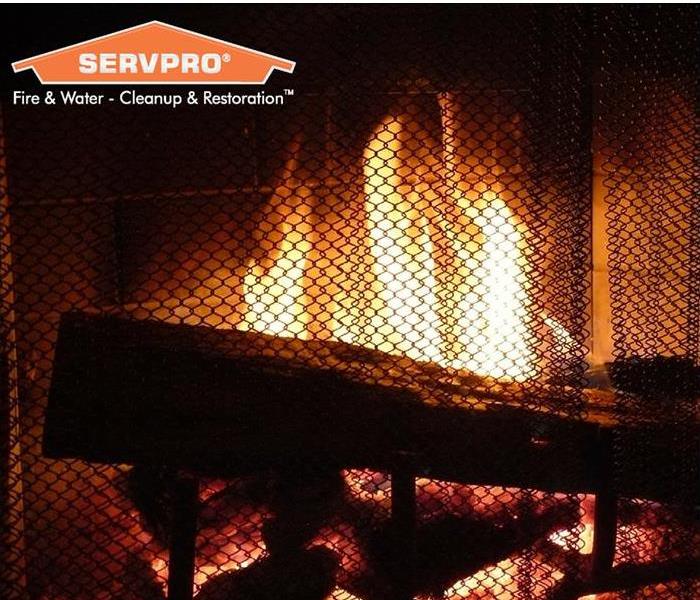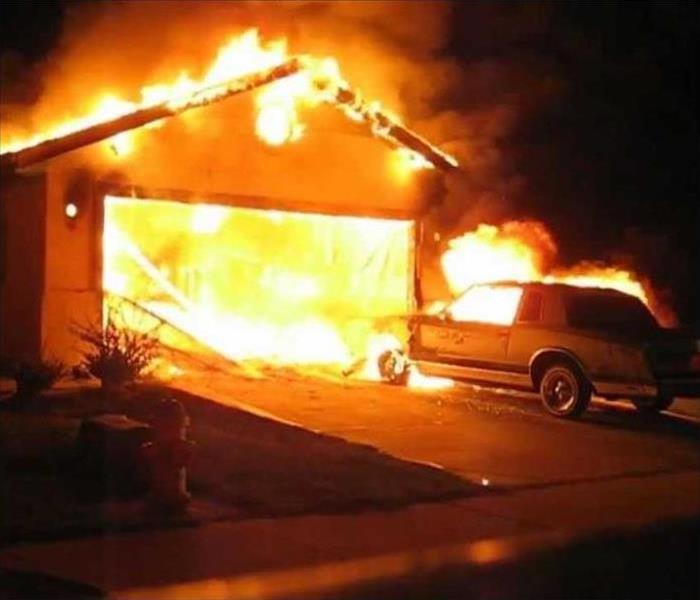Recent Fire Damage Posts
When Fire Damages Your Pinehurst/Moore and Montgomery Counties Building, We Can Help
1/3/2023 (Permalink)
Fire damage to a property can immediately affect your ability to live in it or work there. Other than the obvious structural damage, there could be other factors that render the home or commercial property uninhabitable. Soot and smoke damage are two of the most common causes. It is easy to underestimate the damage caused by smoke and soot after a fire. This type of disaster requires special products and equipment. It is best to contact SERVPRO immediately if you have suffered this type of property damage.
SERVPRO project managers have the ability to assess your property's damage after a fire, and provide transparent restoration processes. You or your insurance company, or both depending on the circumstances surrounding the loss, will be contacted directly by them. They will also provide daily communication about project progress reports and information so that you are always up to date on what is happening in your property.
We can also help with odor, soot, and smoke damage. After completing the restoration and cleaning, our team of construction professionals is ready to begin your project and rebuild your home.
We hope that your property is not damaged by fire. However, we are available 24/7/365 to assist you in the event of such damage.
Make sure your Employees are Fire Ready
4/28/2022 (Permalink)
Smart Fire Prevention Practices for Businesses
- Hold meetings to educate your employees on emergency evacuation plans.
- Familiarize and train employees on how to use fire extinguishers and other fire-fighting tools.
- Stage a fire drill at least once a year.
- Clearly mark emergency exits and escape routes, and keep them unobstructed at all times.
- Provide a minimum of one 2A 10BC-rated fire extinguisher for every 75 feet of travel distance within every 6,000 square feet. Mount fire extinguishers on the wall, three to five feet from the floor.
- Provide quarterly maintenance and 5-year certification of your fire sprinkler system.
- Remove trash and waste paper from the office on a regular basis.
- Keep the furnace room, electrical rooms, and spaces below stairwells clear—never use them for storage.
- Place heat-generating appliances such as copiers, heaters, and coffee makers away from combustible materials.
- Keep your workspace and equipment well ventilated and clean—especially clear of oil and dust.
- Do not use electrical equipment when flammable gases, vapors, liquids, dust, or fibers are present.
- Check to make sure your circuits are not overloaded.
- Maintain free access to all electrical control panels. Material or equipment stored in front of the panels will slow down power shut-downs in an emergency situation.
- Use extension cords ONLY for temporary wiring.
- Replace any damaged or missing electrical components, including the covers on all plates.
- Identify each circuit breaker in an electrical panel and install blanks for missing circuit breakers.
- Clearly label the contents of all compressed gas cylinders. Chain or nest cylinders to prevent them from falling over.
3 Ways Water Can Damage Your Home After a Fire
2/14/2022 (Permalink)
A fire can wreak havoc on your home, but the flames aren’t the only things that can cause destruction to your property. Often times, water can cause as many or, in some cases, more problems as the fire damage itself. If you own a home in Pinehurst/Moore & Montgomery Counties then you should be aware of the ways that water can cause further devastation after a fire.
1. Ruptured Pipes
During a fire, temperatures in your home can become extreme, and the intense heat can cause burst pipes and plumbing malfunctions. Falling debris can also lead to warped or broken pipes. Even if parts of your home are spared from burning, flooding can cause water damage throughout your residence, especially to walls and flooring.
2. Storm Damage
Fire damage often includes structural problems to the roof and windows. This can mean that water will be able to enter the home during any inclement weather that occurs before repairs can be completed. Placing tarps on the roof and boarding any broken windows can help mitigate these potential problems.
3. Water From Fire Hoses
When firefighters go to work to extinguish a burning house, their biggest ally is water. While absolutely necessary, the thousands of gallons that can come from a fire hose can leave behind a great deal of residual water that will need to be cleaned and removed. The longer this water sits stagnant, the greater the potential for incurring more damage and costly repairs. Fire extinguishers used by emergency responders can also contain compressed water, which can also leave behind destruction.
If you are dealing with the heartbreak of a fire in your dwelling, you are probably preparing to combat the fire damage you have suffered. However, you should also make a plan to deal with the destruction that water may have caused to your property, as well. Contact an emergency restoration specialist for more information to help you restore your home to the safe haven you deserve.
Kitchen Fires Call for Technical Fire Damage Restoration Efforts
1/23/2022 (Permalink)
Let SERVPRO Help with Fire Damage Restoration After You Have a Kitchen Fire in Pinehurst/Moore & Montgomery Counties
An unexpected kitchen fire not only dampens your plans but it leaves a decent amount of smoke damage in its wake. After a protein fire, even when flames and smoke seem minimal, it can impact the kitchen as well as your entire Pinehurst/Moore & Montgomery Counties home. The aftermath stemming from a protein fire may not be immediately visible, but the sticky, foul-smelling residue will coat a lot of surfaces in the immediate area. SERVPRO is available to help with house fire clean-up to address protein fires in the kitchen and other restoration needs.
What happens during a kitchen fire leads to the need for skilled fire damage restoration in Pinehurst/Moore & Montgomery Counties. Protein fires pose a unique restoration challenge due to the burnt foods causing pungent odors, often turning into an issue that is difficult to mitigate. SERVPRO can tell you the following about what results from a kitchen fire:
- They generate a strong, lingering odor beyond many other types of fires
- Protein fire may leave little noticeable residue, making it difficult for an untrained DIY clean up
- The burn allows odors to migrate into furnishings and other areas of the structure
- Many projects involving kitchen fires call for sealing agents
- There might be a need for multiple methods and attempts to achieve the best results
SERVPRO features IICRC-certified fire and smoke restoration technicians ready to handle the work. We arrive and thoroughly assess the scene, then select specialized methods for addressing sticky, stubborn protein residue, clean all surfaces, and perform controlled demolition as needed. Your kitchen will be “Like it never even happened.”
Do you need help with specialized fire damage restoration? SERVPRO of Pinehurst/Moore & Montgomery Counties is the crew to call at (910) 428-5280.
Pinehurst / Moore & Montgomery Counties Smoke and Soot Cleanup
1/29/2021 (Permalink)
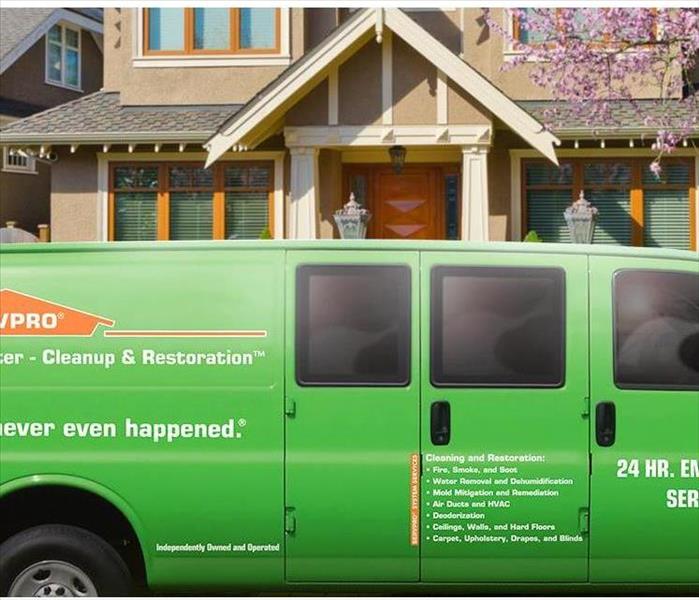 Smoke and Soot Damage Can Cause a Pervasive Odor in Your Pinehurst / Moore or Montgomery County Home.
Smoke and Soot Damage Can Cause a Pervasive Odor in Your Pinehurst / Moore or Montgomery County Home.
Smoke and soot is very invasive and can penetrate various cavities within your home, causing hidden damage and odor. Our smoke damage expertise and experience allows us to inspect and accurately assess the extent of the damage to develop a comprehensive plan of action.
Smoke and soot facts:
- Hot smoke migrates to cooler areas and upper levels of a structure.
- Smoke flows around plumbing systems, seeping through the holes used by pipes to go from floor to floor.
- The type of smoke may greatly affect the restoration process.
Different Types of Smoke
There are two different types of smoke–wet and dry. As a result, there are different types of soot residue after a fire. Before restoration begins, SERVPRO of Pinehurst / Moore & Montgomery will test the soot to determine which type of smoke damage occurred. The cleaning procedures will then be based on the information identified during pretesting. Here is some additional information:
Wet Smoke – Plastic and Rubber
- Low heat, smoldering, pungent odor, sticky, smeary. Smoke webs are more difficult to clean.
Dry Smoke – Paper and Wood
- Fast burning, high temperatures, heat rises therefore smoke rises.
Protein Fire Residue – Produced by evaporation of material rather than from a fire
- Virtually invisible, discolors paints and varnishes, extreme pungent odor.
Our Fire Damage Restoration Services
Since each smoke and fire damage situation is a little different, each one requires a unique solution tailored for the specific conditions. We have the equipment, expertise, and experience to restore your fire and smoke damage. We will also treat your family with empathy and respect and your property with care.
Have Questions about Fire, Smoke, or Soot Damage?
Call Us Today – [910] 428 - 5280
Holiday Safety Tips
12/7/2020 (Permalink)
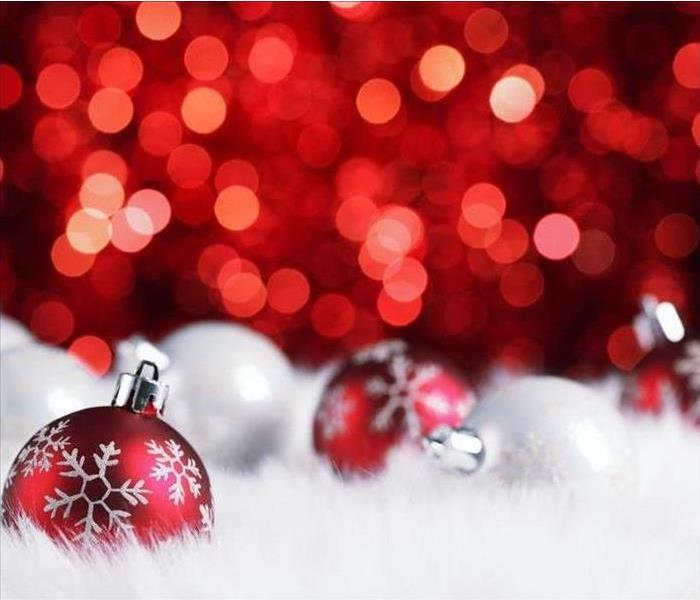 Happy Holidays!
Happy Holidays!
Thanksgiving, Christmas, and other holidays are right around the corner. While it’s a great season to spend with friends and family, it’s also the time when most house fires occur. We’ve seen first-hand how a fire can unexpectedly upend people’s lives, which is why we’re sharing a few tips to prevent a holiday fire disaster!
- Don’t leave the kitchen unattended while cooking. Cooking is a popular pastime during the holiday season, but it’s also one the largest causes of home fires in the U.S. Whenever you cook, don’t leave the kitchen attended while it’s still in use—not even for a second. Fires can occur quickly and without warning!
- Keep your heating equipment away from flammable equipment. When it’s cold outside, we go inside and heat up. But space heaters and fire places can pose a fire hazard if precautions aren’t taken. When you decide to keep warm, keep heating equipment at least 3 feet away from flammable objects.
- Be careful with candles. Candles account for more than half of home fires in the month of December. Although they are popular (and often part of culture and tradition), they can put your home at risk if they aren’t properly handled. Keep them away from children, don’t leave them unattended, and keep them away from flammable objects.
The holidays should be a time for celebration and camaraderie, but a house fire can ruin all of that. This holiday season, we hope you’ll practice fire safety and have a disaster-free time. If a fire does occur, know that our team at SERVPRO of Pinehurst/Moore and Montgomery Counties is available 24/7, including the holiday season!
Smoke & Soot Damage in Pinehurst/Moore & Montgomery Counties
11/11/2020 (Permalink)
Smoke and soot is very invasive and can penetrate various cavities within your home, causing hidden damage and odor. Our smoke damage expertise and experience allows us to inspect and accurately assess the extent of the damage to develop a comprehensive plan of action.
Smoke and soot facts:
- Hot smoke migrates to cooler areas and upper levels of a structure.
- Smoke flows around plumbing systems, seeping through the holes used by pipes to go from floor to floor.
- The type of smoke may greatly affect the restoration process.
Different Types of Smoke
There are two different types of smoke–wet and dry. As a result, there are different types of soot residue after a fire. Before restoration begins, SERVPRO of Pinehurst/Moore and Montgomery Counties will test the soot to determine which type of smoke damage occurred. The cleaning procedures will then be based on the information identified during pretesting. Here is some additional information:
Wet Smoke – Plastic and Rubber
- Low heat, smoldering, pungent odor, sticky, smeary. Smoke webs are more difficult to clean.
Dry Smoke – Paper and Wood
- Fast burning, high temperatures, heat rises therefore smoke rises.
Protein Fire Residue – Produced by evaporation of material rather than from a fire
- Virtually invisible, discolors paints and varnishes, extreme pungent odor.
Our Fire Damage Restoration Services
Since each smoke and fire damage situation is a little different, each one requires a unique solution tailored for the specific conditions. We have the equipment, expertise, and experience to restore your fire and smoke damage. We will also treat your family with empathy and respect and your property with care.
Have Questions about Fire, Smoke, or Soot Damage?
Call Us Today –(910)428-5280
Fire Safety
10/30/2020 (Permalink)
Fire Safety
Take a moment to ask yourself the following questions regarding fire safety in your home to avoid the risk. SERVPRO of Iowa City / Coralville is here to help even before you need us.
- Do you have adequate smoke detectors in your home?
Every Home should have at least one working smoke alarm. It’s recommended to have approved smoke alarms on each level of the home, outside sleeping areas and inside bedrooms. Test your alarm monthly and replace batteries once a year even if the battery seems to be okay.
- How good are your electric connections?
Never overload electrical circuits or extension cords. Never place cords or wires under rugs in high traffic areas. If any electric cables are worn or taped, they should be replaced immediately. Shut off and unplug any appliances that sputter, spark or emit an unusual smell.
- Is your Stove clear of flammable objects?
Keep wires, cloths and oven gloves away from stove top. Also don’t let grease or other remains build up-they can go up in flames
- Has your chimney been swept?
If you have a fireplace, you should have your chimney inspected and cleaned at least once a year. Give yourself enough time in case repairs are needed before the cold weather sets in.
- Do you have several easy -to -use fire extinguishers in your home?
It’s a good ideal to have several. And make sure that all family members know where they are located and how to properly use them.
- Do you have an escape plan?
Practice an escape plan with your family. Stay low to the floor when escaping from the fire and never open doors that are hot. Have a set location where everyone can meet after escaping the house.
Top 10 Causes of House Fires
10/7/2020 (Permalink)
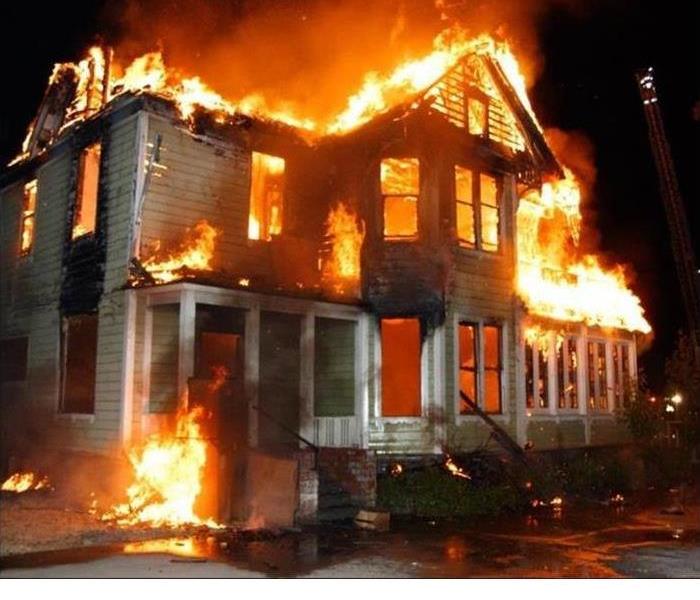 Once a fire begins, it can grow instantly
Once a fire begins, it can grow instantly
Every home faces the potential for a numerous assortment of risks with the most dangerous of the array being a house fire. An accidental fire can occur from many household items and can easily decimate a house in minutes if it is not properly and quickly handled. While proper insurance can help mitigate financial loss, it is better to understand and work to prevent the situations that lead to house fires on any kind. Most homes are stocked full with combustible items.
This list is meant to help homeowners not only identify potential issues but also lower the risk of a house fire. Whether it’s a candle accidentally burning throughout the night, faulty cooking equipment or any other scenario, homeowners should be aware of the most common causes of house fires and work to minimize and prevent accidents before they occur. With the Holidays right around the corner, be extra cautious when using candles and setting up a tree.
10.Barbeque
During the outdoor cooking season, grills left unattended on a wooden deck or next to a wall of a home can bring about a fire. A heated grill next to a wooden fence can easily cause fire, and grills have been known to ignite the exterior walls of a home or garage if placed too close.
9.Christmas Trees
Christmas trees are a holiday favorite for many as a staple to the holiday season, but they also come with many risks. Especially when the tree becomes dry, a quick spark can set the whole tree on fire. Make sure to keep the water reservoir full and to unplug the tree when you are not at home.
8.Inadequate Wiring
These fires erupt from overheating and to minimize this from occurring, make sure systems are installed properly with their protective features.
7.Children Playing with Fire
Children are very curious and will sometimes get access to flammable objects and put the property at risk. This includes matches, stove tops, candles and more. Make sure to keep lighters, candles, and matches out of reach from kids.
6.Candles
The lighters and matches utilized to light candles are just as dangerous as the candle itself. Fires can start from unsupervised candles and children getting ahold of them.
5.Electrical Equipment
These fires normally erupt from short circuiting which, in turn, causes sparking to ignite materials in the household. These are difficult to location, because they are often in hidden locations and a fire can build before the residents can acknowledge the situation.
4.Careless Smoking
Cigarette butts are a large perpetrator for house fires as cigarettes will sometimes be left unattended or dropped.
3.Flammable liquids
Chemical fires occur from spontaneous combustion: this is a reaction of chemicals combining with oxygen to produce enough heat to ignite. Be sure to store fuels and other chemicals in proper containers that are protected from heat.
2.Heating Equipment
When in the presence of fabrics or other combustibles, personal space heaters and baseboard heaters can create a house fire. It is recommended to never leave the house with a space heater running.
1.Cooking Equipment
Out of all the scenarios, the most common residential fires come from cooking, making up almost half of house fires. This can occur from grease and oil being overheated in the stove or oven, for grease and oil are highly flammable and combusts without needing direct flame contact. Many times, open flames and ovens are left unattended when in use and aren’t mitigated until it is too late.
Another source to look out for are portable cooking appliances which includes electric griddles and toasters. These appliances must be cool to the touch before being stored away. You practice safety by making sure to clean pans to eliminate grease build-up along with removing crumbs and scraps from toasters and electric griddles.
Fire Damage Can Continue to Affect Your Property
2/17/2020 (Permalink)
Post-Fire Damage
The damage to your home or commercial property doesn't end after the fire has been put out or after firefighters leave your home. Damage may result from water being used to put out the fire or fire extinguisher residue. Our highly trained technicians use specific techniques to restore and mitigate any damage to your property.
The fire damage restoration process begins the moment you call us here at SERVPRO (910-428-5280). We at SERVPRO understand your commercial or residential property is important and needs an immediate response. Our representatives may ask you questions so we're able to respond with the proper equipment and resources. The extension of damage is determined by a careful scope of the building, noting any soot, fire, or smoke damage. This helps us form a plan of action.
What We Can Do to Help
Fires may compromise the integrity of any roofs, walls, windows, or ceilings that have been affected. We offer immediate roof-tarp and board-up solutions which ensure the structure can be maintained and minimize any further damages. If water is present we use appropriate water removal techniques such as air movers or dehumidifiers.
Often, soot particles mix with water and seep into hard to reach areas, which can cause a change in odor. Our technicians are trained to locate and eliminate any offending odors through deodorization. If able, we can remove any decomposing material. Most often, we target the odors with thermal foggers, which targets any foul smelling molecules and neutralizes them.
Call SERVPRO of Pinehurst/Moore & Montgomery Counties today to have your property returned to its pre-fire state!
Eliminating Fire Damage Residues
1/15/2020 (Permalink)
Pinehurst homeowners usually have multiple problems after a fire. Besides the physical damage caused by the flames, there are also smoke residues that can coat the surfaces in a home and leave odors.
SERVPRO restoration crews combat these types of fire damages by learning everything possible about them. That includes various types of residues, how they form during the fire, the materials that burn, and the best methods for cleaning them.
Every fire produces smoke residues. Most are dry and wet smoke residues. If the fire burns the material quickly, and oxygen present is abundant, the residues left are usually dry, powdery, and non-greasy. Materials that burn quickly are paper, dry wood, and natural fibers like cotton or wool.
Technicians can easily clean them off surfaces using a dry sponge or wipe them off upholstered furniture with a brush. If they are thick, specialists can use a vacuum to remove most of the residue and then follow up with a sponge.
If a fire starts in a space with less oxygen, it burns slowly. This smoldering fire produces a thicker smoke that often leaves a wet or sticky residue. Items that contribute to these residues contain synthetic materials. Examples include plastic like kitchen appliances, foam rubber furniture cushions, and other polymers like linoleum floors.
Depending on how thick they are, SERVPRO technicians can clean wet residues using a cleaning agent and a wet sponge. For very thick residues, they may need to use stronger cleaners to break them up and then a scraper to remove them.
In special cases, there are protein-based and fuel oil smoke residues. Protein fires start in the kitchen, with burning beef, fish, or poultry. The residues left by these food products can leave a clear, or yellowish color on every surface. Technicians clean them using the same methods for cleaning wet residues.
Odors left by proteins are extremely pungent and can spread through the entire home with the smoke, even if most of the residues remain in the kitchen. To remove them, technicians use deodorizing agents, foggers, air movers, and fans to neutralize odor particles and force them out of the home.
Puff-backs leave fuel oil smoke residues. They are common here and in other parts of the Northeast where residents still use traditional furnaces. A puff-back happens when a malfunctioning oil burner ignites incorrectly, or there is a crack in a heat exchanger.
Both problems shake loose old soot which can be forced out of the system and into the home along with unburned fuel oil. Technicians can often remove the residues without damaging painted surfaces. If the furnace operated for an extended period before a homeowner notices, then the residues may bond to the paint, requiring us to strip it and perhaps the wall panels underneath.
If you have problems resulting from a recent fire, call SERVPRO of Pinehurst today at (910) 428-5280. We are here for you.
Top 10 Causes for a House Fire
10/30/2019 (Permalink)
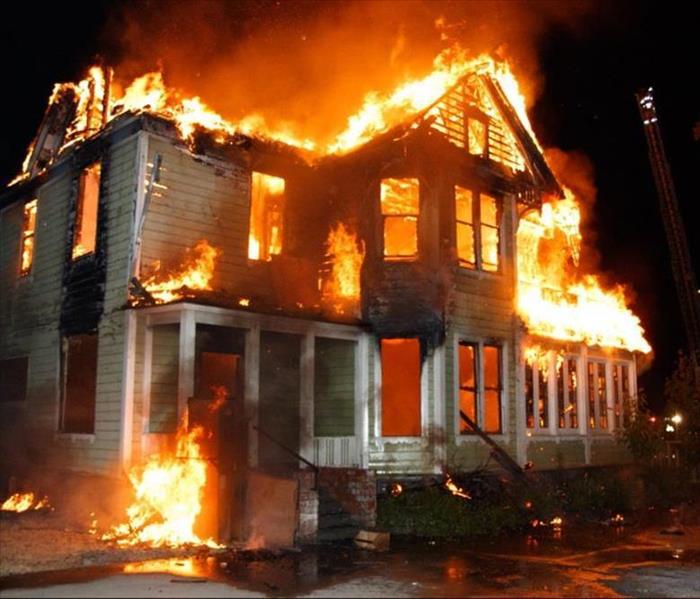 Once a fire begins, it can grow instantly.
Once a fire begins, it can grow instantly.
Every home faces the potential for a numerous assortment of risks with the most dangerous of the array being a house fire. An accidental fire can occur from many household items and can easily decimate a house in minutes if it is not properly and quickly handled. While proper insurance can help mitigate financial loss, it is better to understand and work to prevent the situations that lead to house fires on any kind. Most homes are stocked full with combustible items. This list is meant to help homeowners not only identify potential issues but also lower the risk of a house fire. Whether it’s a candle accidentally burning throughout the night, faulty cooking equipment or any other scenario, homeowners should be aware of the most common causes of house fires and work to minimize and prevent accidents before they occur. With the Holidays right around the corner, be extra cautious when using candles and setting up a tree.
10.Barbeque
During the outdoor cooking season, grills left unattended on a wooden deck or next to a wall of a home can bring about a fire. A heated grill next to a wooden fence can easily cause fire, and grills have been known to ignite the exterior walls of a home or garage if placed too close.
9.Christmas Tree
Christmas trees are a holiday favorite for many as a staple to the holiday season, but they also come with many risks. Especially when the tree becomes dry, a quick spark can set the whole tree on fire. Make sure to keep the water reservoir full and to unplug the tree when you are not at home.
8.Inadequate Wiring
These fires erupt from overheating and to minimize this from occurring, make sure systems are installed properly with their protective features.
7.Children Playing with Fire
Children are very curious and will sometimes get access to flammable objects and put the property at risk. This includes matches, stove tops, candles and more. Make sure to keep lighters, candles, and matches out of reach from kids.
6.Candles
The lighters and matches utilized to light candles are just as dangerous as the candle itself. Fires can start from unsupervised candles and children getting ahold of them.
5.Electrical Equipment
These fires normally erupt from short circuiting which, in turn, causes sparking to ignite materials in the household. These are difficult to location, because they are often in hidden locations and a fire can build before the residents can acknowledge the situation.
4.Careless Smoking
Cigarette butts are a large perpetrator for house fires as cigarettes will sometimes be left unattended or dropped.
3.Flammable liquids
Chemical fires occur from spontaneous combustion: this is a reaction of chemicals combining with oxygen to produce enough heat to ignite. Be sure to store fuels and other chemicals in proper containers that are protected from heat.
2.Heating Equipment
When in the presence of fabrics or other combustibles, personal space heaters and baseboard heaters can create a house fire. It is recommended to never leave the house with a space heater running.
1.Cooking Equipment
Out of all the scenarios, the most common residential fires come from cooking, making up almost half of house fires. This can occur from grease and oil being overheated in the stove or oven, for grease and oil are highly flammable and combusts without needing direct flame contact. Many times, open flames and ovens are left unattended when in use and aren’t mitigated until it is too late. Another source to look out for are portable cooking appliances which includes electric griddles and toasters. These appliances must be cool to the touch before being stored away. You practice safety by making sure to clean pans to eliminate grease build-up along with removing crumbs and scraps from toasters and electric griddles.
Fire Safety
10/30/2019 (Permalink)
Fire Safety
Take a moment to ask yourself the following questions regarding fire safety in your home to avoid the risk. SERVPRO of Iowa City / Coralville is here to help even before you need us.
- Do you have adequate smoke detectors in your home?
Every Home should have at least one working smoke alarm. It’s recommended to have approved smoke alarms on each level of the home, outside sleeping areas and inside bedrooms. Test your alarm monthly and replace batteries once a year even if the battery seems to be okay.
- How good are your electric connections?
Never overload electrical circuits or extension cords. Never place cords or wires under rugs in high traffic areas. If any electric cables are worn or taped, they should be replaced immediately. Shut off and unplug any appliances that sputter, spark or emit an unusual smell.
- Is your Stove clear of flammable objects?
Keep wires, cloths and oven gloves away from stove top. Also don’t let grease or other remains build up-they can go up in flames
- Has your chimney been swept?
If you have a fireplace, you should have your chimney inspected and cleaned at least once a year. Give yourself enough time in case repairs are needed before the cold weather sets in.
- Do you have several easy -to -use fire extinguishers in your home?
It’s a good ideal to have several. And make sure that all family members know where they are located and how to properly use them.
- Do you have an escape plan?
Practice an escape plan with your family. Stay low to the floor when escaping from the fire and never open doors that are hot. Have a set location where everyone can meet after escaping the house.
Pinehurst/Moore and Montgomery Counties Smoke and Soot Cleanup
10/28/2019 (Permalink)
Smoke and soot is very invasive and can penetrate various cavities within your home, causing hidden damage and odor. Our smoke damage expertise and experience allows us to inspect and accurately assess the extent of the damage to develop a comprehensive plan of action.
Smoke and soot facts:
- Hot smoke migrates to cooler areas and upper levels of a structure.
- Smoke flows around plumbing systems, seeping through the holes used by pipes to go from floor to floor.
- The type of smoke may greatly affect the restoration process.
Different Types of Smoke
There are two different types of smoke–wet and dry. As a result, there are different types of soot residue after a fire. Before restoration begins, SERVPRO of Pinehurst/Moore and Montgomery Counties will test the soot to determine which type of smoke damage occurred. The cleaning procedures will then be based on the information identified during pretesting. Here is some additional information:
Wet Smoke – Plastic and Rubber
- Low heat, smoldering, pungent odor, sticky, smeary. Smoke webs are more difficult to clean.
Dry Smoke – Paper and Wood
- Fast burning, high temperatures, heat rises therefore smoke rises.
Protein Fire Residue – Produced by evaporation of material rather than from a fire
- Virtually invisible, discolors paints and varnishes, extreme pungent odor.
Our Fire Damage Restoration Services
Since each smoke and fire damage situation is a little different, each one requires a unique solution tailored for the specific conditions. We have the equipment, expertise, and experience to restore your fire and smoke damage. We will also treat your family with empathy and respect and your property with care.
Have Questions about Fire, Smoke, or Soot Damage?
Call Us Today –(910)428-5280
Why Choose SERVPRO of Pinehurst/Moore & Montgomery Counties For Your Fire Damage Restoration?
2/6/2019 (Permalink)
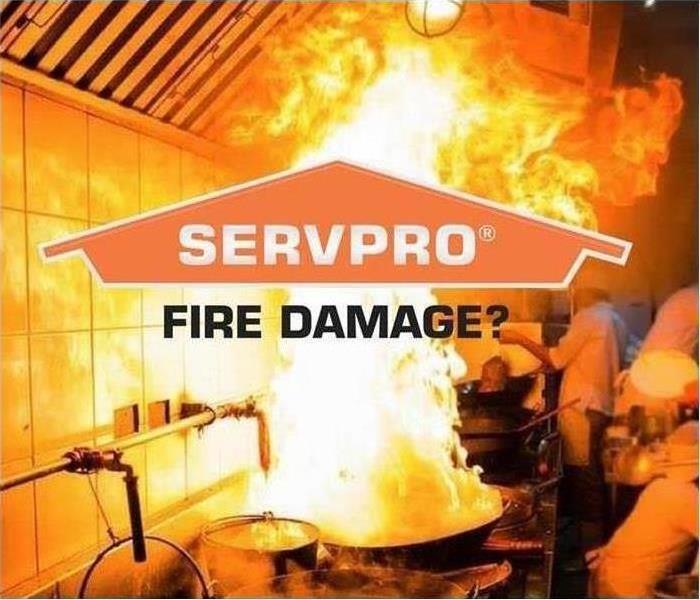 Make sure you call SERVPRO of Pinehurst/Moore & Montgomery Counties if your home or business experiences fire damage!
Make sure you call SERVPRO of Pinehurst/Moore & Montgomery Counties if your home or business experiences fire damage!
We’re Faster to Any Size Disaster
When your Pinehurst, Moore, or Montgomery home/business experiences fire or smoke damage, you need professional help quickly. SERVPRO of Pinehurst/Moore & Montgomery Counties is dedicated to responding immediately, which helps to prevent secondary damage and to reduce the cost of restoration.
We’re Fire and Water Damage Specialists
As fire and water restoration specialists, we have the training, experience and specialized equipment necessary to restore your home or business. We are committed to providing superior service while restoring your property back to pre-fire condition.
- Fire & Smoke Restoration Technician
- Odor Control Technician
- Upholstery & Fabric Cleaning Technician
- Water Damage Restoration Technician
Our Restore vs. Replace Mentality
We focus on restoring versus replacing because restoring the affected areas of your property is substantially less costly than demolishing and replacing those areas. This “restore first” mentality also allows us to get your home or business back to pre-fire condition quicker and with less disruption.
Tips On How To Prevent Winter Home Fires
2/6/2019 (Permalink)
The winter season is here and with it comes shorter days and lower temperatures. No matter where you live, winter brings a change in the weather. In an effort to keep our homes and workplaces cozy, many people use alternative heat sources like fire places, portable space heaters, and wood burning stoves. Did you know, heating equipment is a leading cause of home fire deaths? According to the National Fire Protection Association, heating equipment fires cause estimated $1 billion in direct property damage annually. Keep the following safety tips in mind to help reduce your risk of a heating-related fire.
- Keep anything flammable at least three feet away from heating equipment, like the furnace, fireplace, wood stove, or a portable space heater. Have a three foot "kid-free zone" around open fires and space heaters.
- Make sure the fireplace has a sturdy screen to stop sparks from flying into the room. Ashes should be cool before putting them in a metal container. Keep the container a safe distance away from your home.
- Remember to turn portable heaters off when leaving the room or going to bed.
- Always use the right kind of fuel, specified by the manufacturer, for fuel burning space heaters.
50% of all residential heating-related fires are reported during the months of December, January and February.
- Have heating equipment and chimneys cleaned and inspected every year by a qualified professional.
- Have a qualified professional install stationary space heating equipment, water heaters or central heating equipment according to the local codes and manufacturers instructions.
- Test smoke alarms monthly.
If your property suffers from fire damage, contact SERVPRO of Pinehurst/Moore & Montgomery Counties to help make it "Like it never even happened."
How to Test Your Smoke Alarms and When to Replace Them
1/21/2019 (Permalink)
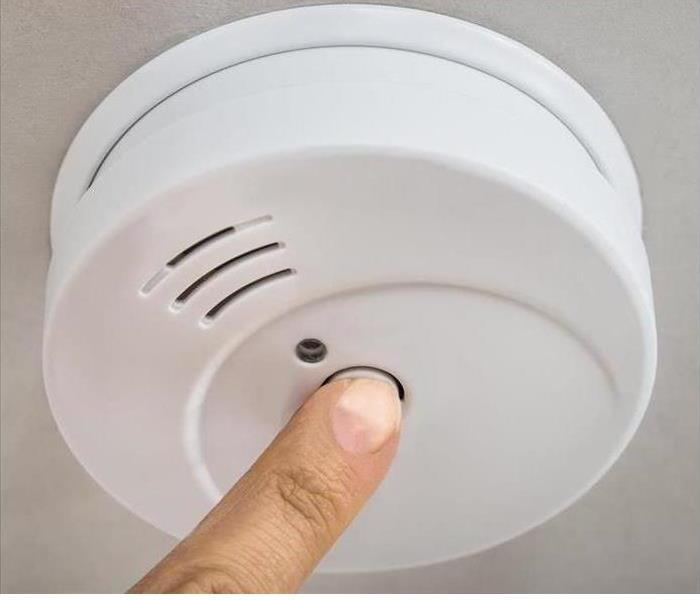 A fire alarm is the best way to be alerted of a fire in your home!
A fire alarm is the best way to be alerted of a fire in your home!
Smoke alarms are crucial to preventing fire deaths and injuries during a home fire. However, you need to maintain and test them regularly to ensure they're working properly at any given moment. Here are the steps involved in testing a smoke alarm in your home.
First, make sure everyone in your household test.
Have someone stand in the room farthest way form the alarm you are testing to ensure that the alarm is heard in all rooms of your home.
When everyone is ready, use a sturdy chair or ladder to reach the alarm. Locate the test button, then push and hold it for a few seconds to trigger the alarm.
In addition to testing your alarm manually, you should also check that the sensors are working. Use an aerosol smoke detector tester and spray it towards the alarm; it should go off after a few seconds.
The National Fire Protection Association (NFPA) recommends that you should test your smoke alarms monthly and replace them every 10 years. Batteries should also be replace at least once a year.
Garage Fire Safety Tips!
1/16/2019 (Permalink)
According to the U.S. Fire Administration, residential garage fires tend to spread faster than fires which start in another area of a home. Check out these tips to learn how to prevent tires in your garage:
- Store flammable substances, such as paints, gasoline, oil or varnish outside the garage an home, preferably in a shed.
- Always keep items which can catch fire on high shelves and away from appliances that produce heat.
- Use electrical appliance or tools carefully.
- Install a heat alarm that will sound when it detects dangerously high temperatures.
- Don't fill portable gasoline containers inside.
However, if a fire happens in your garage contact SERVPRO of Pinehurst, Moore & Montgomery to make your garage look "Like it never even happened."
How Fire Damage Can Continue to Affect Your Home or Businesses Contents and Structure!
1/10/2019 (Permalink)
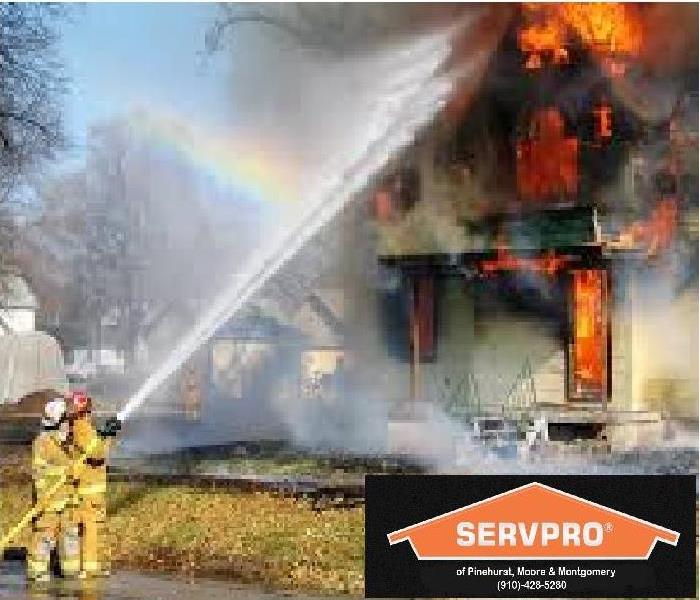 Fire damage affecting your home needs quick remediation or secondary damages will result. Call SERVPRO because we are available 24/7.
Fire damage affecting your home needs quick remediation or secondary damages will result. Call SERVPRO because we are available 24/7.
Fire damage does not end the moment the firefighters leave your home or once the fire has been successfully put out. More damage may result from the water that was used to extinguish the fire; therefore, our restoration team employs specialized techniques to attend to the various challenges that arise. Though the restoration procedures may sound the same, your New Hope property requires unique solutions after such experiences.
The Fire Damage Restoration process begins the moment you call our SERVPRO team. We understand that such situations require an immediate response, and our representatives usually ask questions regarding the event. By responding to our questions, we are in a position to immediately respond with appropriate resources and equipment. To determine the extent of the damage caused by the soot, smoke, and fire, we perform a careful inspection of the building. The examination helps us to formulate a relevant plan of action.
Some fire incidents may compromise the roofs, walls, and windows of your property. By offering immediate roof-tarp and board-up solutions, we can attend to such concerns. Such services ensure the security of the building is maintained and help in minimizing further damage. If water is present, we employ appropriate water removal techniques. For instance, pumps to physically extract the water, as well as using air movers and dehumidifiers to dry wet areas.
When soot particles are mixed with water and penetrate hard to reach areas, rotting may take place, and the odor challenge may result. Our SERVPRO technicians are trained to locate and eliminate the unpleasant odors through a process known as deodorization. We can use thermal foggers to dispense deodorants into target locations and neutralize the odor causing particles. Where possible, we physically remove any decomposed particles to control the odor problem.
SERVPRO of Pinehurst, Moore, and Montgomery is a trusted industry leader in residential and commercial fire damage cleaning and restoration. Call (910)-428-5280 today to have your questions answered, and your property returned to its preloss state.

 24/7 Emergency Service
24/7 Emergency Service





